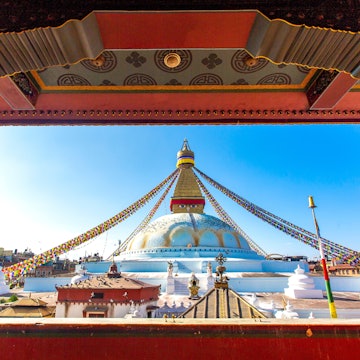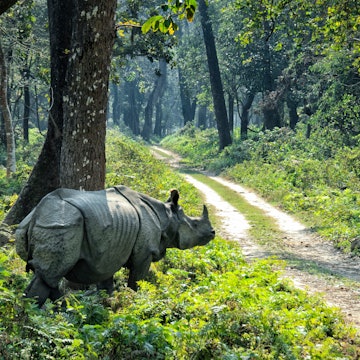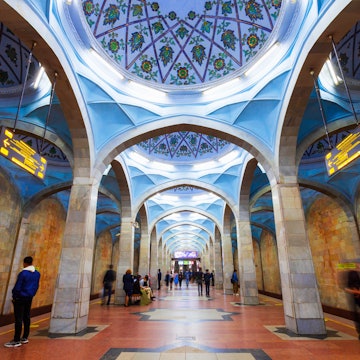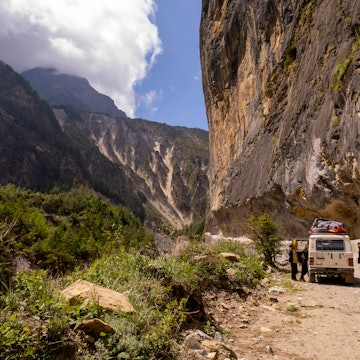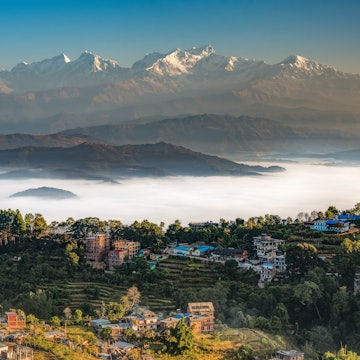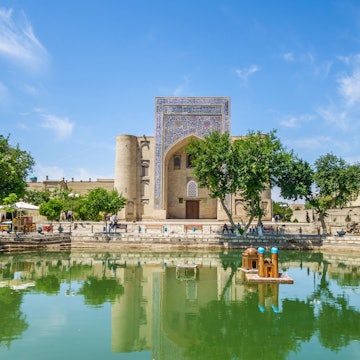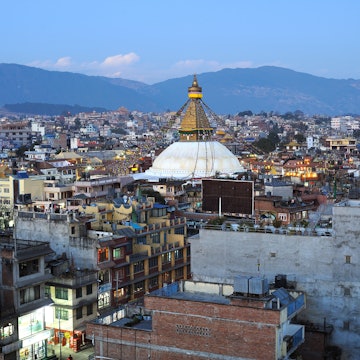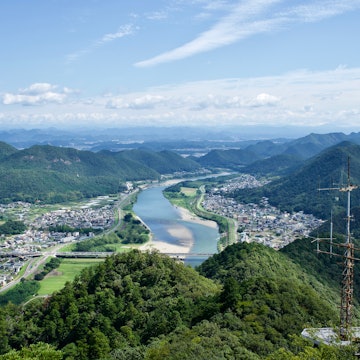
Trekking Mount Kailash, one of the world’s greatest overland trips

Aug 13, 2019 • 5 min read

A pilgrim makes prayer. Feng Wei Photography / Getty
Sacred to over a billion Buddhists, Hindus and Jains, enigmatic Mount Kailash is quite possibly the world's holiest mountain. Pilgrims from across Asia trek across the spectacular high-altitude landscape of remote Western Tibet to pay homage and walk around the sacred mountain. It is one of the world's great overland trips and, despite the altitude, is surprisingly accessible.

Kailash (Kang Rinpoche, or 'Precious Snow Mountain' in Tibetan) gets much of its power from its striking physical location, a lone peak detached from the main Himalayan range in Tibet's Kangdise mountains. The curiously four-sided mountain rises sheer from the surrounding plain, with its four faces facing the cardinal directions. Springing from its foothills are the sources of four of Asia's greatest rivers – the Indus, Sutlej, Brahmaputra (Yarlung Tsangpo) and Karnali (which flows into the Ganges).
For Tibetans this is where the Tantric magician Milarepa vanquished his Bön (Tibetian folk religion) rival Naro Bönchung in an epic battle of sorcery, confirming the dominancy of Buddhism over the existing Bön religion. For Hindus, Kailash is the abode of Shiva and his consort Parvati. Both Buddhists and Hindus view Kailash as the mythical Mount Meru, the central axis of the universe. Such is the sanctity of the 6474m peak that to this day it remains unclimbed.

Walking the Pilgrimage Circuit
The three-day clockwise walk around Mt Kailash is one of Asia's classic treks. It isn't particularly strenuous but it does take you to high altitudes, starting at 4670m and peaking at 5650m at the Drölma-La pass, so you need to be well acclimatised and physically fit. Days are not long (the first and third days are essentially half days) and it's possible to hire local yaks or porters to carry your gear. You can either camp en route or overnight in simple pilgrim accommodation at the monasteries of Drira-puk and Zutul-puk. You'll walk with Tibetan nomads, Indian tourists and Bön pilgrims (who make the walk anti-clockwise), passing three monasteries and dozens of sacred sites with rocks carved with stone mantras en route.
Such is the spiritual power of Kailash that a single circuit – or kora – of the mountain is said by some to erase the sins of a lifetime. At one spot known as Shiva-tsal visitors leave a memento of themselves on the mountain – often an item of clothing or a lock of hair – as a symbol of the old life they are leaving behind. Hard-core pilgrims aim for 108 circuits, some inching their way around the mountain like caterpillars, doing full body prostrations. A journey around Kailash is as much a spiritual as physical journey.
The most popular time to walk the mountain is during the Saga Dawa festival which usually begins in May and ends in June, when thousands of pilgrims (and many tourists) descend on the mountain to celebrate Buddha's enlightenment. A large prayer pole is raised with great fanfare at Tarboche at Kailash's southwestern corner, after which everybody starts off on their trek. Check on the political situation if planning a trip for the festival, as the region is sometimes closed to foreigners at this time, in fear of pro-Tibetan demonstrations.
How to get to Mount Kailash
The best way is to take a flight or train to Lhasa from China or Kathmandu, spend a couple of days acclimatising there and then start the four-day drive out to the mountain in far Western Tibet. On the way you can stop off at the Tibetan town of Shigatse and towering ancient monastery of Sakya, and even detour to the stunning north face of Everest Base Camp (add on two days). In recent years the roads to western Tibet have been paved and hotels upgraded so it's now a relatively comfortable and scenically stunning drive.
On the way back from western Tibet you can opt to get dropped at the Nepal border at Rasuwagadhi, a days' drive from Kathmandu, after descending through the dramatic Alpine-style Kyirong Valley, dropping from the high Tibetan plateau to the edge of the Indian subcontinent. All in, you should budget for a 17- to 21-day road trip, depending on your itinerary.

Several agencies in Kathmandu offer overland tours from Kathmandu direct to Kailash but note that the altitude gain is potentially dangerous on these trips; it's safer to spend a couple of days in Lhasa seeing its great monastic sights. Acclimatisation is particularly important in Western Tibet, since there's almost nowhere below 4500m.
What to see in the area around Kailash
Lying at the foot of Mt Kailash is Lake Manasarovar (Mapham Yum-tso in Tibetan), a stunning high-altitude lake that Tibetans and Hindus consider sacred. Pilgrims walk around the lake in four days but it's now possible to drive around it, stopping (and preferably staying overnight) en route at the charming lakeshore monasteries of Seralung, Gossul, Trugo and Chiu. The views of the immense cobalt waters framed by the snow-capped peaks of Kailash and Gurlha Mandata (7728m) are truly astonishing.
A day's drive from Kailash takes you to Thöling Monastery and the ruins of Guge, a 10th-century Buddhist kingdom that drew on nearby Kashmiri and Ladakhi styles to create some of the Himalaya's most sublime Buddhist art. Exploring the murals, tunnels and hilltop citadel of the former Guge capital at Tsaparang ranks as one of Asia's greatest (and least known) experiences. Figure on a three-day return trip from Kailash and try to visit the beautiful Silk Road-style cave murals of Dungkhar and Piyang en route.
It's tempting to make the long drive out to Mt Kailash with as few breaks as possible but it's worth stopping en route at crag-top Drapsang Monastery, photogenic Dargyeling Monastery and important Tradun Monastery (just outside Drongba), all of which lie between Lhatse and Mt Kailash.
Permits to Tibet
All foreign tourists to Tibet need to arrange a tour (vehicle, driver and guide) through a local Tibetan agency in order to get a Tibet Tourism Bureau permit to enter Tibet. You need to pick this up in China or Kathmandu before arriving in Tibet. Your agency will need up to a month to secure this and additional permits for western Tibet. You will also need a valid China visa.
Get more travel inspiration, tips and exclusive offers sent straight to your inbox with our weekly newsletter. Make sure you're ready for anything with travel insurance from our trusted partners.
https://shop.lonelyplanet.com/products/tibet-travel-guide-10







